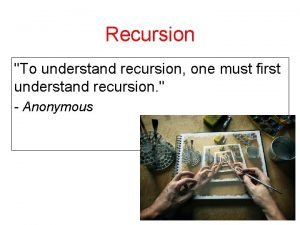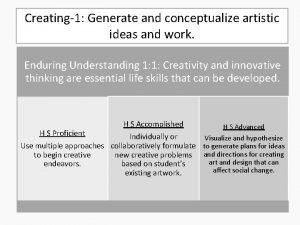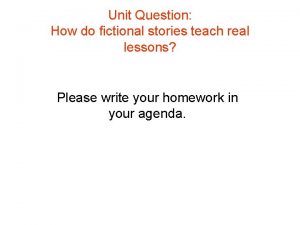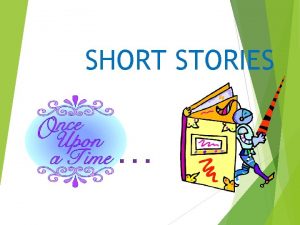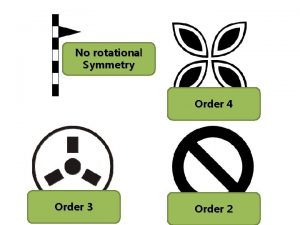In order to develop and understand fictional stories























- Slides: 23


In order to develop and understand fictional stories, several characteristics must be acknowledged, such as the story’s: -Plot -Characterization -Setting -Point of View -Style -Figures of Speech -Myth -Theme

Important questions one may ask about fiction include: 1) Whose voice is speaking? 2) What is the nature of the voice? 3) What plot strategy has the writer chosen? 4) How does setting help reveal characters and theme? 5) Etc. , etc.

Genre fiction is a term for fictional works written with the intent of fitting into a specific literary genre in order to appeal to reader and fans. All fiction is generic, but genre fiction is overtly and intentionally so. Example: Horror novels include suspense, fast-pace, action, conspiracy, and psychological tricks. Which brings us to… Sorry, Wrong Number

Definition: The pattern of events or main story in a narrative or drama In fiction, the plot strategy includes several components such as the chronological order of the story, sources of conflict, resolution vs. open-ended outline, and flashback and foreshadowing. We are only focusing on PLOT from this fictional story

PRESENTS: Brings You. . LUCILE FLETCHERS STORY Lucille Fletcher is author of Sorry, Wrong Number, a radio screenplay that was expanded into an 89 minute film in 1948. Sorry Wrong Number was one of her most popular fictional plays, hence the idea to make it into a movie. "I like to take an agonizing situation which is baffling and haunting, in which a sympathetic leading character is endlessly in doubt, tortured by circumstance, and then see what happens, " Fletcher told the Washington Post in 1963 (http: //articles. latimes. com/2000/sep/05/local/me-15596) This short story was included in a book called Stories Not for the Nervous by Alfred Hitchcock.

PLOT GRAPH


VIDEO: Hitchcock Classic Introduction Image 1

Step 1 of Plot: (or Exposition) is the background information on the characters and setting explained at the beginning of the story. In Sorry, Wrong Number, we find Mrs. Stevenson- a central character- in bed sick making a phone call to her husband who is late coming home. The phone at this point is her sole connection to the outside world.

I. Book Excerpt . 287 – 288 PG Image 2

Image 3 Image 4 http: //www. youtube. com/watch? v=X 5 Sm 7 j. LNtm. U


Step 2 of Plot: Is the series of events that lead to the climax of the story, usually the conflict or struggles of the protagonist In Sorry, Wrong Number, the rising action begins when Mrs. Stevenson overhears the conversation about a murder that is to take place at 11: 15 that night. She is afraid for her life and home alone…she begins to worry and freak out. She begins to unravel important information about her husbands dealings…and the plot thickens.

II. Book Excerpt PG . 299 -300

Image 5 http: //www. youtube. com/watch? v=Vo 4 l. I 2 JNBH s


Step 3 of Plot: A moment of great intensity in the literary work, which generally brings events to a head and leads to the conclusion…OR leaves the story unresolved, which is known as and open-ended story. In Sorry, Wrong Number, the climax occurs when Mrs. Stevenson pieces all the information together from her phone conversations of the evening and realizes there are plans to kill someone specific. I wonder who the victim is…

III. Book Excerpt . 362 -363 PG


That’s ALL Folks! Image 6

Get Your Own Copy!

References Barnard, B. , & Winn, D. (2006). Access literature: An introduction to fiction, poetry, and drama. Boston: Thomson Wadsworth. Hitchcock, A. (1965). Alfred Hitchcock presents stories not for the nervous. New York: Random House. Images 1 -6 Retrieved October 30, 2009 from http: //images. google. com/ Wallis, H. B. , Litvack, A. , Fletcher, L. , Stanwyck, B. , Lancaster, B. , Richards, A. , et al. (2002). Sorry, wrong number. Hollywood, CA: Paramount. Retreived November 01, 2009, from http: //www. youtube. com
 Is a personal narrative fiction or nonfiction
Is a personal narrative fiction or nonfiction To understand recursion you must understand recursion
To understand recursion you must understand recursion Via optica
Via optica N factorial
N factorial How to develop a beverage product
How to develop a beverage product Inverted word order examples
Inverted word order examples Explain law of mass action
Explain law of mass action Metaboloism
Metaboloism First-order and second-order change examples
First-order and second-order change examples Law is order and good law is good order
Law is order and good law is good order First order cybernetics and second order cybernetics
First order cybernetics and second order cybernetics Master data management roadmap ppt
Master data management roadmap ppt Generate and conceptualize artistic ideas and work
Generate and conceptualize artistic ideas and work Chapter 3 section 2 hinduism and buddhism
Chapter 3 section 2 hinduism and buddhism Yacc calculator
Yacc calculator Develop new approaches to public governance and engagement
Develop new approaches to public governance and engagement England and france develop
England and france develop How did the holocaust develop and what were its results
How did the holocaust develop and what were its results Develop and implement a food safety program
Develop and implement a food safety program Which weather map symbol is used to represent violently
Which weather map symbol is used to represent violently How did the kingdoms of west africa develop and prosper
How did the kingdoms of west africa develop and prosper Hinduism
Hinduism Types of characters
Types of characters Fictional detective created by arthur conan doyle
Fictional detective created by arthur conan doyle



